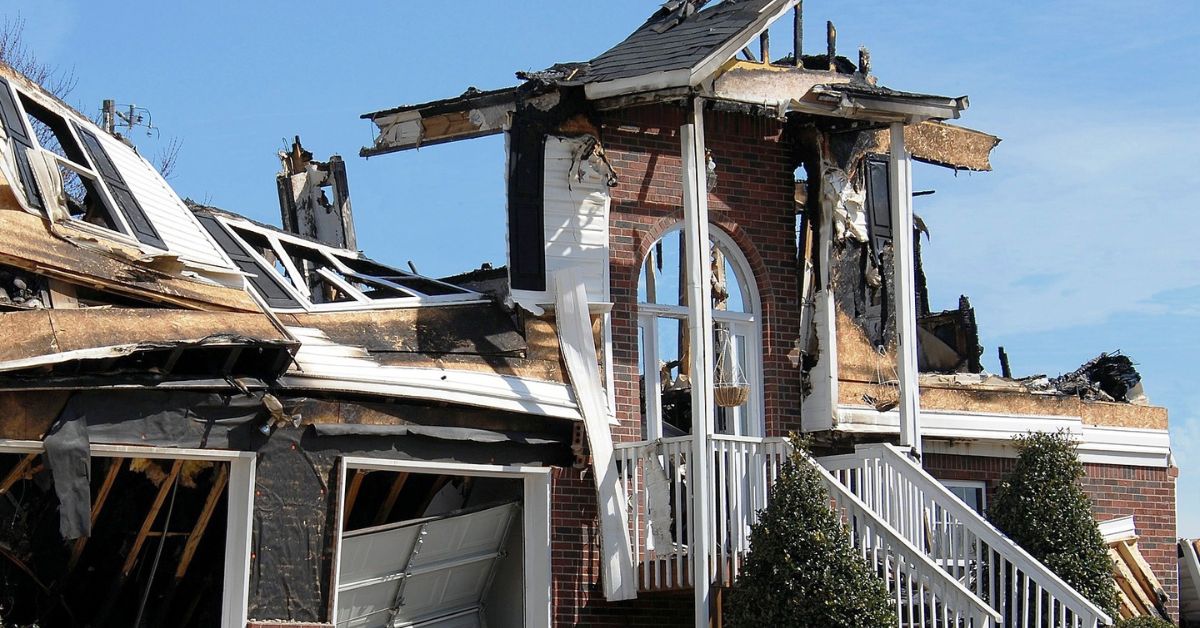In the midst of a disaster, navigating insurance claims can feel overwhelming. Take the first steps by contacting your agent or company to understand coverage, file claims quickly, and make temporary repairs to protect your property while keeping records for reimbursement.
After a Disaster, What You Need to Know:
- How to file a claim
- How the claim process works
- What is covered and what is not covered
First Steps
Contact your agent or company immediately and find out:
- whether the damage is covered under the terms of your policy
- how long you have to file a claim
- whether your claim exceeds your deductible (the amount of loss you agree to pay before insurance kicks in)
- how long it will take to process the claim
- whether you’ll need estimates for repairs
Make temporary repairs: Take reasonable steps to protect your property from further damage. Save receipts for your spending and submit them to your insurance company for reimbursement. Remember that payments for temporary repairs are part of the total settlement. So, if you pay a contractor a hefty sum for a temporary repair job, you may not have enough money for permanent repairs. Beware of contractors who ask for a large amount of money upfront and contractors whose bids are very low — they might cut corners and do shabby work. Only make extensive permanent repairs once the claims adjuster has assessed the damage.
If you need to relocate, keep your receipts: If you need to find other accommodations while your home is being repaired, keep records of your expenses. Homeowners insurance policies provide coverage for the cost of additional living expenses if an insured disaster damages your home.
Prepare for the adjuster’s visits: Your insurance company may send you a proof of loss form to complete, or an adjuster may visit your home first. (An adjuster is a person professionally trained to assess the damage.) In either case, the more information you have about your damaged possessions—a description of the item, approximate date of purchase, and what it would cost to replace or repair—the faster your claim can generally be settled.
- To substantiate your loss, prepare an inventory of damaged or destroyed items and give a copy to the adjuster and copies of any receipts. Don’t throw out damaged items until the adjuster has visited. You should also consider photographing or videotaping the damage. Work from memory if your property was destroyed or you no longer have any records.
- Identify structural damage to your home and other structures, such as a garage, tool shed, or in-ground swimming pool. Make a list of everything you want to show the adjuster, such as cracks in the walls and missing roof tiles. You should also check the electrical system. Most insurance companies pay for these inspections.
- Get written bids from licensed contractors. The bids should include details of the materials used and prices on a line-by-line basis, which will make adjusting the claim faster and simpler.
- Keep copies of the lists and other documents you submit to your insurance company and any paperwork your insurance company gives you. Record the names and phone numbers of everyone you speak to.
Flood damage is excluded under standard homeowners and renters insurance policies. However, flood coverage is available as a separate policy from the federal government’s National Flood Insurance Program (NFIP) and a few private insurers. The NFIP covers up to $250,000 for the home’s structure and $100,000 for personal possessions. Flood insurance claims should be filed with your homeowners insurance company.
Factors that Determine the Settlement You Will Get
Type of Policy
Replacement Cost and Actual Cash Value: Replacement cost policies provide you with the dollar amount needed to replace a damaged item with one of a similar kind and quality without deducting for depreciation (the decrease in value due to age, wear and tear, and other factors). Actual cash value policies pay the amount needed to replace the item minus depreciation.
Suppose, for example, a tree fell through the roof onto your eight-year-old washing machine. With a replacement cost policy, the insurance company would pay to replace the old machine with a new one. If you had an actual cash value policy, the company would pay only a part of the cost of a new washing machine because a machine used for eight years is worth less than its original cost.
Extended and Guaranteed Replacement Cost: If your home is damaged beyond repair, a typical homeowners policy will pay to replace it up to the policy’s limits. If the value of your insurance policy has kept up with increases in local building costs, a similar dwelling can generally be built for an amount within the policy limits.
With an extended replacement cost policy, your insurer will pay a certain percentage over the limit to rebuild your home—20 percent or more, depending on the insurer—so that if building costs go up unexpectedly, you will have extra funds to cover the bill. A few insurance companies offer a guaranteed replacement cost policy that pays whatever it costs to rebuild your home as it was before the disaster. However, neither type of policy will pay for more expensive materials than those used in the destroyed structure.
Mobile Home, Stated Amount: If you own a mobile home, you may have a stated amount policy. With this policy, the maximum amount you receive if your home is destroyed is the sum you agreed to when the policy was issued. If you opt for the stated amount, update your policy annually to ensure that the amount will cover the cost of replacing your mobile home. Check with local mobile home dealers to find out what similar homes sell for.
Policy Limits
Most insurance policies provide adequate coverage because they include an inflation-guard clause to keep up with increases in local building costs. If you have replacement cost coverage, your insurance company will pay the total cost of repairing or replacing the damaged structure with a “like kind and quality building.” In other words, if you were adequately insured and lived in a three-bedroom ranch before the disaster, your insurance company would pay to build a similar three-bedroom ranch.
Most insurance companies recommend that a dwelling be insured for 100 percent of replacement cost so you have enough money to rebuild if your home is destroyed.
However, you may not be fully covered if you have made significant improvements to your house, such as enclosing a porch to create another room or expanding your kitchen, without informing your insurance company of the changes at the time.
Temporary Living Expenses
If you can’t live in your home because of the damage, your insurance company will advance you money to pay for reasonable additional living expenses. The amount available to pay for such expenses is generally equal to 20 percent of the insurance on your home. This amount is in addition to the money for repairs or to rebuild your house. Some insurance companies pay more than 20 percent. Others limit additional living expenses to the amount spent during a specific period.
Among the items typically covered are eating out, rent, telephone or utility installation costs in a temporary residence, and extra transportation costs. Insurance policies often discuss additional living expenses under the heading loss of use.
Rebuilding and Making Repairs
If your home was destroyed, you have several options.
- You can rebuild a new home on the same site.
- Depending on state law, you can sell the land and build or buy a house in a different place, even another state.
- You can decide that you would instead rent.
If you decide not to rebuild, the settlement amount depends on state law, what the courts have said about this matter, and your kind of policy. Ask your insurance agent or company representative what the settlement amount will be based on.
Concerning repairs, if you downgrade, for example, replace an expensive wood floor with one using a cheaper product, you are not entitled to the difference in cash.
Other Factors
Compliance with current building codes: Building codes require structures to be built to specific minimum standards. For example, buildings must withstand high winds in areas likely to be hit by hurricanes. If your home was damaged and did not comply with current local building codes, you may have to rebuild the damaged sections according to current codes.
In some cases, complying with the code may require a change in design or building materials and may cost more. Generally, homeowners insurance policies won’t pay for these extra costs, but insurance companies offer an endorsement that pays a specified amount toward such changes. (An endorsement is an addition to an insurance policy that changes what the policy covers.) Information concerning this coverage is found under ordinance or law in the Section I exclusion part of your policy.
The use of public adjusters: Your insurance company provides an adjuster at no charge. You also may be contacted by adjusters who have no relationship with your insurance company and charge a fee for their services. They are known as public adjusters. If you decide to use a public adjuster to help you settle your claim, this service could cost you as much as 15 percent of the total value of your settlement. Sometimes, the insurance department sets the percentage that public adjusters may charge after a disaster. If you decide to use a public adjuster, first check references and qualifications by contacting the Better Business Bureau and your Massachusetts Division of Insurance. Also, contact the National Association of Independent Insurance Adjusters (www.naiia.com).
Compensation for Damage
Vehicles: If your car was damaged and you have comprehensive coverage in your auto insurance policy, contact your auto insurance company. If your car has been so severely damaged that it’s not worth repairing, you will receive a check for its actual cash value—what it would have been worth if it had been sold just before the disaster. Kelley Blue Book (www.kbb.com) or other such publications can give you an idea of your car’s worth.
Trees and shrubbery: Most insurance companies will pay up to $500 to remove trees or shrubs that have fallen on your home. They will also pay for damage caused to insured structures and their contents up to policy limits, but they won’t pay to remove fallen trees, causing a mess in your yard.
Water: While homeowners’ policies don’t cover flood damage, they do cover other kinds of water damage. For example, they will generally pay for damage from rain coming through a hole in the roof or a broken window as long as the hole was caused by a hurricane or other disaster covered by the policy. If there is water damage, check with your agent or insurance company representative to see whether it is covered.
The Payment Process
Disasters can make enormous demands on insurance company personnel. Sometimes, after a major disaster, state officials ask insurance company adjusters to see everyone who has filed a claim before a specific date. The deadline may force some to make a rough first estimate when there are many claims. If the initial assessment is not complete, set up an appointment for a second visit. The first check you get from your insurance company is often an advance. If you’re offered an on-the-spot settlement, you can immediately accept the check. Later, if you find other damage, you can “reopen” the claim and file for an additional amount.
Most policies require claims to be filed within one year from the date of the disaster.
Some insurance companies may require you to complete a proof of loss form. This formal statement provides details of your losses and the amount of money you’re claiming and acts as a legal record. Some companies waive this requirement after a disaster if you’ve met with the adjuster, especially if your claim is simple.
The choice of repair firms is yours. If your home is adequately insured, you won’t have to settle for anything less than you had before the disaster. Be sure the contractor is giving you the same quality materials. Wait to get permanent repairs done after the adjuster has approved the price. If you’ve received bids, show them to the adjuster. If the adjuster agrees with one of your bids, then the repair process can begin. If the bids are too high, ask the adjuster to negotiate a better price with the contractor. Adjusters may also recommend firms that they have worked with before. Some insurance companies even guarantee the work of firms they recommend, but such programs are unavailable everywhere. Make sure contractors get the proper building permits.
If you can’t reach an agreement with your insurance company: If you and the insurer’s adjuster can’t agree on a settlement amount, contact your agent or your insurance company’s claim department manager. Make sure you have figures to back up your claim for more money. If you and your insurance company disagree, your policy allows for an independent appraisal of the loss. In this case, you and your insurance company hire independent appraisers who choose a mediator. The decision of any two of these three people is binding. You and your insurance company each pay for your appraiser and share the other costs. However, disputes rarely get to this stage.
Some insurance companies may offer a slightly different way of settling a dispute called arbitration. When settlement differences are arbitrated, a neutral arbiter hears the arguments of both sides and then makes a final decision.
How you receive the money: When your home’s dwelling and contents are damaged, you generally get two separate checks from your insurance company. If your home is mortgaged, the check for home repairs will typically be sent to you and the mortgage lender. As a condition of granting a mortgage, lenders usually require that they are named in the homeowners’ policy and that they are a party to any insurance payments related to the structure. The lender gets equal rights to the insurance check to ensure that the necessary repairs are made to the property in which it has a significant financial interest. This means the mortgage company or bank must endorse the check. Lenders generally put the money in an escrow account and pay for the repairs as the work is completed.
You should show the mortgage lender your contractor’s bid and say how much the contractor wants up front to start the job. Your mortgage company may wish to look over the finished job before releasing the funds for payment. If you don’t get a separate check from your insurance company for the contents of your home and other expenses, the lender should release the insurance payments that don’t relate to the dwelling. It should also release funds that exceed the balance of the mortgage. State bank regulators often publish guidelines for banks to follow after a major disaster. Contact state regulatory offices to find out what these guidelines are.
Some construction firms want you to sign a direction to pay form that allows your insurance company to pay the firm directly. The firm will then bill your insurance company directly and attach the form you signed. Ensure you’re completely satisfied with the repair work and that the job has been completed before signing any forms.
If you have a replacement cost policy for your possessions, you usually need to replace the damaged items before your insurance company will pay. If you decide not to replace some items, you will be paid their actual cash value. Your insurance company will generally allow you several months from the date of the cash value payment to replace the items and collect the total replacement cost. Find out how many months you are allowed. Some insurance companies supply lists of vendors that can help replace your property. Some companies may supply some replacement items themselves.
After your claim has been settled and the repair work is underway, Take the time to reevaluate your homeowners insurance coverage. For example, was your home adequately insured? Did you have replacement cost coverage for your personal property? Talk to your insurance agent or company representative about possible changes.
Consider taking a home inventory to make the claims process more accessible in the future. The Insurance Information Institute offers the free Know Your Stuff Home Inventory Tool.
To learn more, visit www.KnowYourStuff.org.
Source: Insurance Information Institute
Visit Our Personal Insurance Page
Life is an ever-changing journey, and it deserves a thoughtful, comprehensive plan to protect the things and people that matter most. Our dedicated team at Murphy Insurance is here to assist you in creating that plan. With a wide range of product options at our disposal, we ensure that your plan is tailored precisely to your requirements. Our commitment to providing clear, intelligent guidance to help you achieve true peace of mind. Learn more about our personal insurance portfolio.
Visit Our Business Insurance Page
Murphy Insurance stands as your steadfast partner in safeguarding your business from unforeseen challenges in today’s dynamic business landscape. In an era where comprehensive business insurance is not just a prudent choice but a vital one for ensuring the long-term stability and security of your enterprise, we are here to offer our expertise. Running a business inherently entails various risks that can potentially impact your financial stability and reputation. Learn more about our comprehensive business insurance solutions, which are meticulously designed to protect you from these potential threats, granting you peace of mind necessary to focus on the growth and prosperity of your business.














